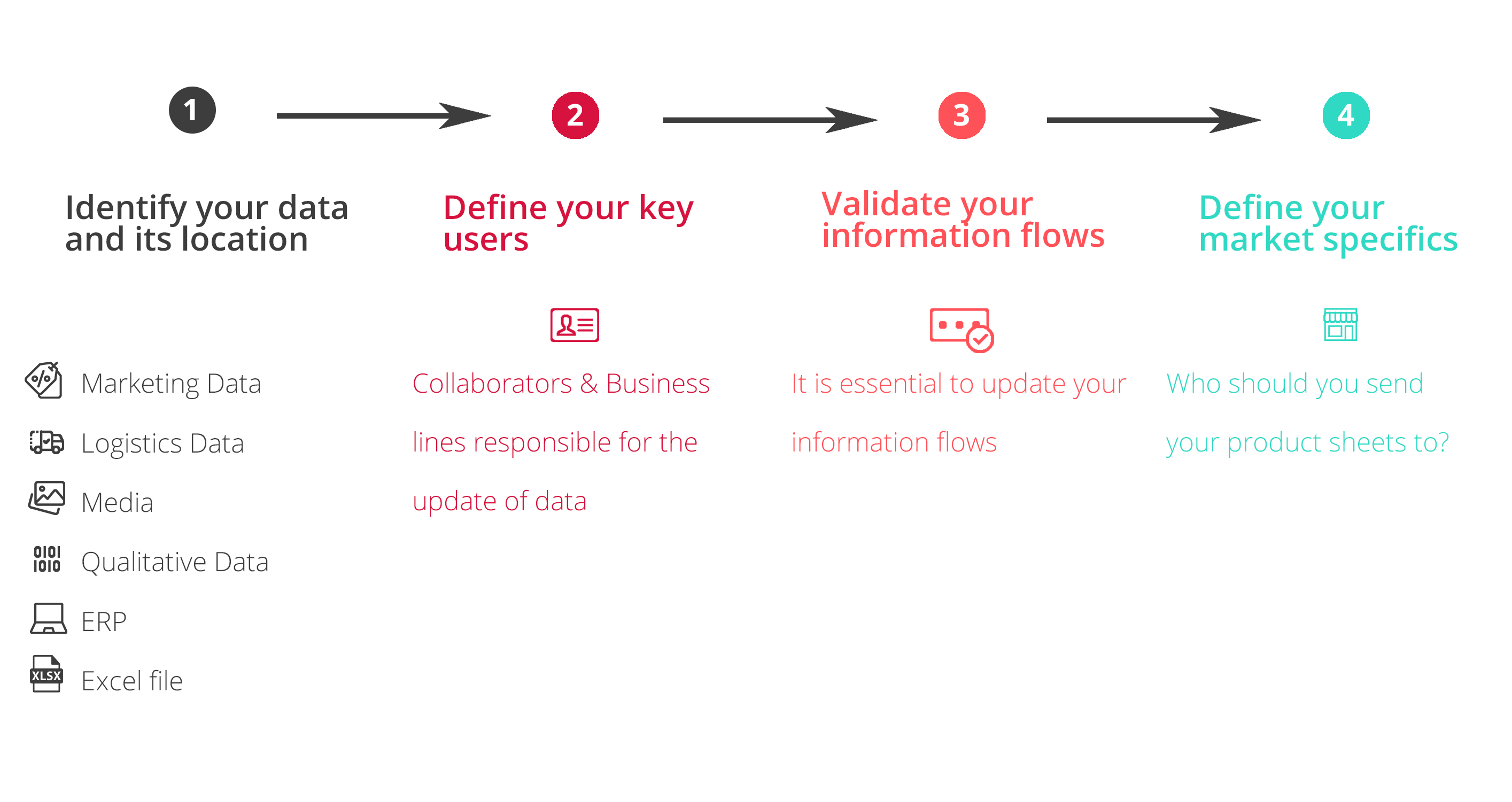You are a manufacturer and you want to implement a PIM (Product Information Management) solution to centralise your data and accelerate the Time-To-Market of your products? With good reason. We provide you with the main steps and our advice to bring your project to a successful conclusion.
Step 1 – Identify the location of your data
In order to best complete the information in your product descriptions, it is first of all essential to identify your data sources, also called data sources. Whether it is marketing information, product visuals, qualitative information or even logistics, this data can be stored in different locations in your information system (CRM, ERP, Excel files...).
Mapping your data will allow you to define the information path between your data repositories and your future PIM platform. Depending on the size and organisation of your company, it will then be possible to envisage a flow between your internal applications and your PIM platform rather than entering your information directly into the PIM. It should be noted that the PIM project is often an opportunity to review the data management process internally, in order to optimise data collection and to define the responsibility of the various departments.
Step 2 - Define the key users
Defining key users is an essential step when setting up a PIM project. Indeed, the identification of the collaborators and business lines responsible for the generation and updating of data will allow for better project management. These employees defined as "Key Users" will be trained to use the platform and will be responsible for sharing their knowledge with people likely to work on the PIM platform.
Also, the Key User will be a true ambassador of the project to the internal teams, accompanying them in this change and making them adhere to the project. In addition, the Key User can act as an intermediary between your teams and your software publisher in order to remove any blockages or improve the user experience. Defining the right Key Users is essential.
Step 3 - Validate information flows
Once the mapping has been established and the key collaborators identified, it is essential to validate and update the information flows. The key to the success of a PIM project for an industrial company lies in the quality of the information. Once your company's information system is updated and validated by your teams, it is then possible to move on to the next step: market specificities.
Step 4 - Define market specifics
Now that your structure and teams are ready, all that remains is to define the outlines and specifics of your PIM solution. To whom do you wish to communicate your product descriptions?
Depending on the country of dispatch and the market of your product, attributes will be imposed when filling in your product description. It is therefore essential to be as precise as possible in defining your needs in order to list exhaustively the constraints linked to your sector (construction, health, foodservice...) and your customers. Indeed, some of them may prefer one channel rather than another – for example the GDSN network – or request additional non-mandatory information, such as the Nutri-Score for food products.
This step is the most important for the success of your project. Once the market, sector and customer specifics have been defined, it will be easier to select and implement the best PIM solution to meet your needs.
 As you will have understood, a successful PIM project requires preparation. However, being accompanied by experts can reduce the burden on the preparatory phase. Furthermore, having up-to-date data at the time of launch is essential, but the real challenge lies in maintaining the quality of this data on an ongoing basis. Depending on the context and ambition of the project, the implementation time varies from a few weeks to several months.
As you will have understood, a successful PIM project requires preparation. However, being accompanied by experts can reduce the burden on the preparatory phase. Furthermore, having up-to-date data at the time of launch is essential, but the real challenge lies in maintaining the quality of this data on an ongoing basis. Depending on the context and ambition of the project, the implementation time varies from a few weeks to several months.
Don't forget that a PIM project is above all a collaborative project, which must involve your teams.


